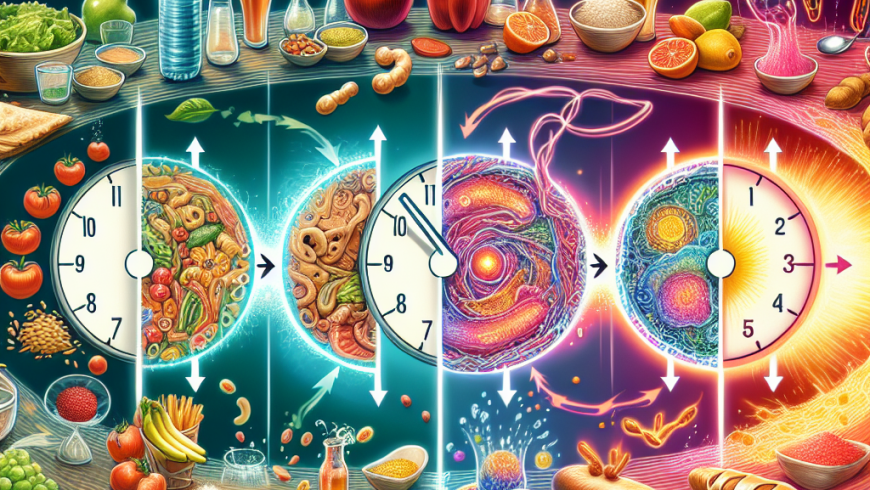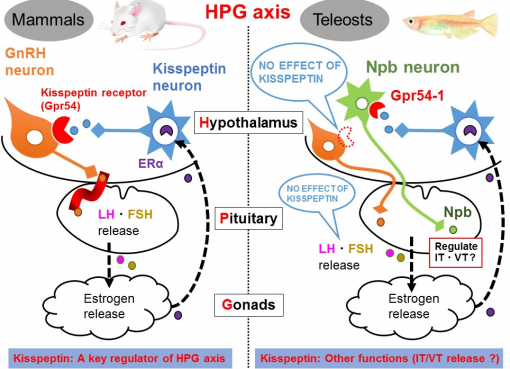Manoj Kumar Kalita1 & Prerona Patowary2
1Assistant Professor, Department of ARGO, LCVSc, AAU, Joyhing, North Lakhimpur
2Scientist, AAU-Goat Research Station, Burnihut, Assam
Introduction
Foods that provide more health advantages than just basic nourishment are referred to as functional foods. To offer health benefits beyond their traditional nutrient composition, these foods are frequently supplemented or fortified with bioactive ingredients like probiotics, vitamins, minerals, and phytonutrients. The concept behind functional food is to offer certain health advantages above and beyond basic nourishment, possibly contributing to the prevention of disease or enhancing general health. It’s important to keep in mind that even while some foods may provide some health benefits, a balanced diet and a healthy lifestyle are always ideal.
Functional foods can include:
- Fortified foods: These are foods that have extra nutrients added to them that might not be present normally. Examples of this type of food include salt and orange juice fortified with iodine or calcium.
- Probiotics: Live beneficial bacteria can enhance digestion and gut health in foods like yoghurt, kefir, and some fermented goods.
- Foods enhanced with omega-3 fatty acids: Due to their proven heart-healthy properties, certain foods, such as milk and eggs, may be fortified with these fatty acids.
- Foods that have additional plant sterols: These can help lower cholesterol levels and are often added to margarine or certain spreads.
- Functional beverages: These are made with additional vitamins, minerals, antioxidants, or other healthy components. Examples of these include vitamin-enriched water and nutrient-rich energy drinks.
Animal diets that have been specifically prepared and provide extra health benefits over and above basic nourishment are referred to as functional foods for animals. Like functional foods for humans, these foods are made to support the general health and wellbeing of animals. They may include particular components or supplements designed to provide extra nutrition or to address a range of health issues.
Here are a few instances of animal-friendly functional foods:
- Joint Health Supplements: To promote joint health in older pets or those who are prone to joint problems, several pet meals are supplemented with additional glucosamine and chondroitin.
- Digestive Health Formulas: Pet foods that have probiotics or prebiotics added to them to support a healthy digestive system.
- Dental Health Treats: Some treats, including dental chews, are designed to help pets maintain good oral hygiene and lessen plaque accumulation.
- Weight Management Foods: Pets can lose weight or maintain a healthy weight with the help of specialised formulation.
- Skin and Coat Health: Pets with lustrous coats and good skin can benefit from foods containing omega-3 fatty acids or other supplements.
- Hypoallergenic Formulas: Diets with limited ingredients or special protein sources that are intended for pets with dietary sensitivities or allergies.
Although the phrases “nutraceuticals” and “functional foods” are synonymous, they pertain to distinct categories of food products that provide health advantages beyond mere nourishment. The primary distinctions between the two are as follows:
| Nutraceuticals | Functional foods | |
| Definition | Nutraceuticals are products derived from food sources (or food components) that are purported to provide health benefits beyond basic nutrition. These may include dietary supplements, herbal products, vitamins, minerals, or other natural substances used for medicinal purposes. | These are conventional foods that have been fortified, enriched, or enhanced with additional nutrients or bioactive compounds to provide health benefits beyond their basic nutritional value. Examples include fortified juices, probiotic yogurts, or cereals with added vitamins. |
| Form | These can be extracts, isolates, supplements, or concentrated forms of bioactive substances obtained from foods or specific nutrients and administered in pill, capsule, powder, or liquid form. | These are whole foods or food products that are modified or enhanced to include additional health-promoting components. |
| Regulation | Often categorized as dietary supplements or herbal products and are regulated differently from conventional foods. They might fall under different regulatory frameworks depending on the country, like the FDA’s regulations on dietary supplements in the U.S. | Typically regulated as conventional foods by food regulatory agencies, such as the FDA (Food and Drug Administration) in the United States. |
| Purpose | Often used with a more specific health-related purpose or targeted health benefits, such as supplements for joint health, immune support, or cognitive function. | Primarily aimed at promoting overall health and well-being through the consumption of everyday foods that are supplemented with beneficial nutrients or compounds. |
There are a number of ways that functional food can work, including –
- Antimicrobial substance production: capable of producing antibiotics, bacteriocins, and acids with antimicrobial qualities to fight off hazardous organisms.
- Competition for adhesion sites: can rival hazardous microorganisms for locations where they would typically adhere, keeping them from taking control.
- Reduction of bacterial toxin metabolism: can aid in reducing the harmful effects of bacterial toxins on the body by reducing their metabolism.
- Immune response modulation: can improve immunity by boosting the phagocytic activity of natural killer cells and macrophages, two crucial immune system constituents.
- Variation in enzyme secretion: may be able to affect the way some enzymes are secreted, which may influence different bodily physiological processes.Top of Form
Method to enhance active components in food:
- Modifying the diet to obtain the highest possible amount of active ingredients
- Blending food components high in nutraceuticals
- Fortifying food with active ingredients
- By fermentation of food products
- Adapting eating habits to a natural diet
Although animal nutraceuticals and functional food have many potential advantages, there are certain challenges and things to keep in mind when considering them:
- Regulation and Quality Control: It can be difficult to guarantee the security, effectiveness, and calibre of functional foods and nutraceuticals for animals. There are regional differences in regulatory monitoring and standards, which results in inconsistent claims and product quality.
- Scientific Evidence: Although functional foods and nutraceuticals are gaining popularity, not all of these products have strong scientific backing for the health benefits they are said to offer in animals. To confirm their efficacy and safety across many animal species and medical conditions, more research is required.
- Dosage and Formulation: It’s critical to establish the right dosage and formulation for animal use in functional foods and nutraceuticals. Ineffectiveness or perhaps harmful effects can result from using the wrong dosages or formulations.
- Considerations Particular to the Animal Species: The nutritional requirements, metabolic rates, and digestive systems of various animal species vary. Creating functional meals or nutraceuticals that meet the needs of particular animal species is difficult and demands careful thought.
- Interaction with Medication: Certain functional foods and nutraceuticals may have an interaction with an animal’s medication regimen, which could impair the medicine’s effectiveness or result in negative side effects. When using these items alongside drugs, proper veterinary assistance is crucial.
- Financial considerations: Compared to traditional feed or supplements, functional foods and nutraceuticals for animals may be more costly. For animal breeders or pet owners, affordability and cost-effectiveness might be major problems.
- Palatability and Acceptance: Due to differences in flavour, texture, or aroma, animals may reject or find it difficult to consume functional foods or supplements. For compliance and efficacy, it is imperative to ensure acceptability and palatability.
- Long-Term Effects: It’s possible that the long-term impacts and possible adverse effects of regular animal ingestion of functional foods or nutraceuticals are not well recognised. It is crucial to keep an eye out for any negative reactions or long-term changes in health.
- Ethical and Environmental Concerns: Purchasing ingredients for nutraceuticals and functional foods may give rise to ethical questions, particularly if doing so uses unethical business methods or has a detrimental effect on the environment.
- Consumer Education: To ensure the ethical and informed use of functional foods and nutraceuticals for animals, it is imperative to educate consumers, especially pet owners and livestock producers, about their proper usage, advantages, and limitations.
To tackle these problems, more research must be done, strict quality control procedures must be followed, and veterinarians and animal nutritionists must work together, regulatory frameworks must be strengthened, and consumer awareness must be raised. It takes careful thought and the right advice to maximise the advantages and reduce the risks that come with functional foods and nutraceuticals for animals.
Reasons for popularity of functional foods
The popularity of nutraceuticals and functional foods has increased dramatically due to a number of variables including consumer tastes, increased health consciousness, and developments in food science. Following are some explanations for their rising fame:
- Health Consciousness: As people become more conscious of and interested in preventative healthcare, they search for foods that provide more health advantages than just basic nourishment. Functional meals and nutraceuticals are seen as a proactive strategy for preserving health and averting illness.
- Preference for Natural Solutions: Compared to synthetic supplements or pharmaceuticals, consumers like natural or less processed goods. Nutraceuticals, which follow the trend towards natural and organic products, frequently include bioactive components sourced from natural sources.
- Ageing Population: Due to the ageing populations in many nations, there is an increasing need for goods that promote joint health, cognitive function, healthy ageing, and general well-being. Functional food and nutraceuticals that address these needs have grown in popularity.
- Customisation and Personalisation: Customers look for goods that are suited to their own dietary requirements and health concerns. Functional food frequently include personalisation choices so that customers can select goods that best suit their particular health requirements.
- Convenience and Accessibility: These products can be easily incorporated into daily routines and consumed as they come in a variety of formats, including capsules, fortified foods, beverages, and snacks.
- Media and Marketing Influence: Consumer awareness of and confidence in the health advantages of nutraceuticals and functional foods has grown as a result of successful marketing initiatives, healthcare professionals’ endorsements, and favourable media coverage.
Conclusion
In conclusion, functional foods and nutraceuticals are important for treating some health issues and enhancing general health in both people and animals. These specialty foods incorporate nutrients, bioactive substances, or certain components that enhance health outcomes, providing additional health advantages beyond basic nutrition. The challenges of properly developing and utilising these products are brought to light by problems including dose accuracy, animal-specific concerns, scientific data substantiating health claims, and regional variations in regulations. Meeting customer wants and preferences while maintaining safety, effectiveness, and quality control is still essential.
References:
Mestre Prates, J.A. and Cristina, Mateus M.R.P. (2002). Functional foods from animal sources and their physiologically active components. Revue Med. Vet., 153 (3): 155-160.
Sonia and Seth, R. (2018). Functional Food (Animal Origin) & Human Health: Brief Review. Int. J. Pure App. Biosci. 6 (5): 1048-1060.
Cerbo, A.D.; Palmieri, B.; Chiavolelli, F.; Guidetti, G. and Canello, S. (2014). Functional Foods in Pets and Humans. Int. J. Appl. Res. Vet. Med., 12 (3): 192-199.
Jalgaonkar, K.; Mahawar, M.K.; Bibwe, B.; Nath, P. and Girjal, S. (2019). Nutraceuticals and Functional Foods. Trends & Prospects in Processing of Horticultural Crops, pp. 231-250.




